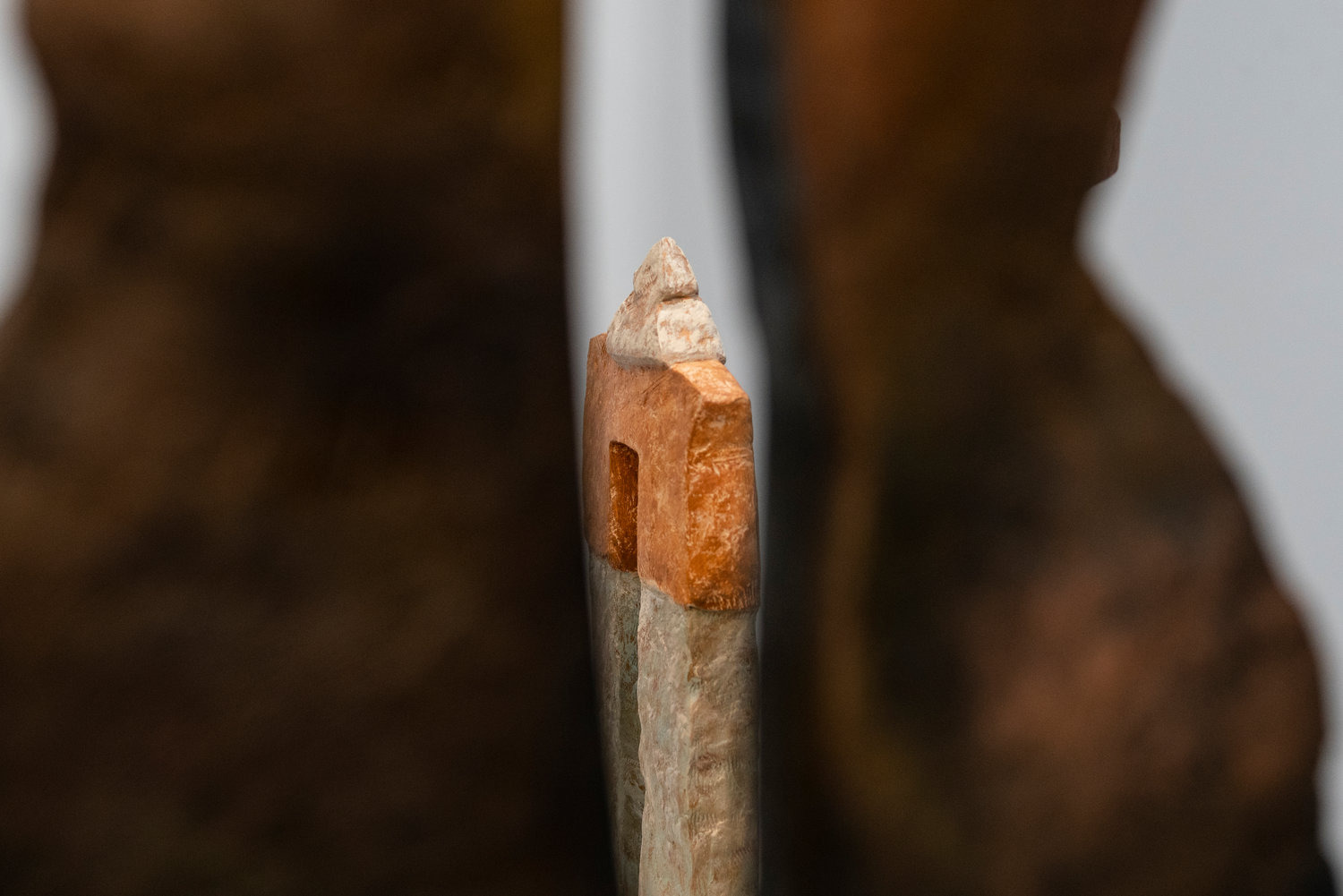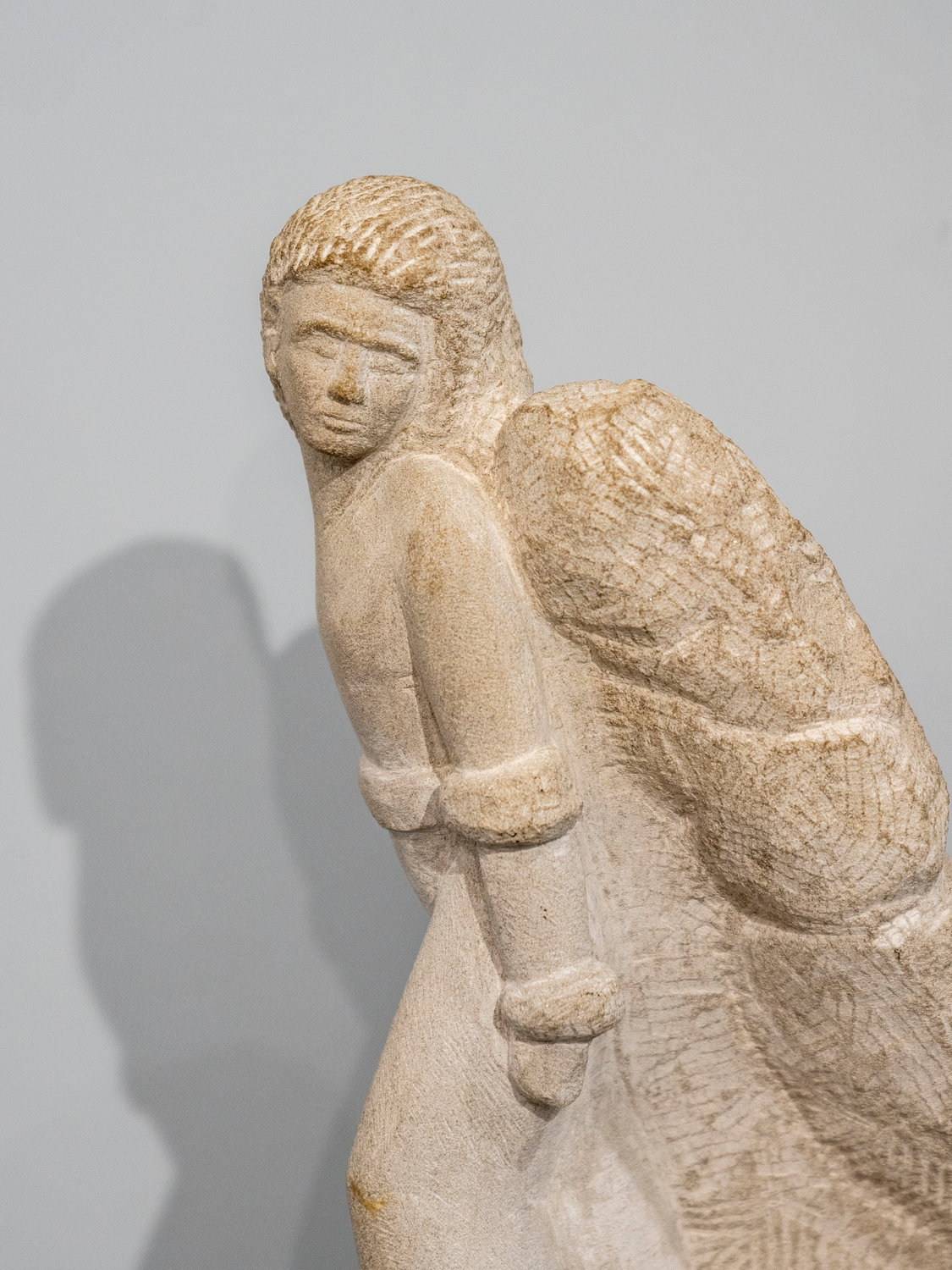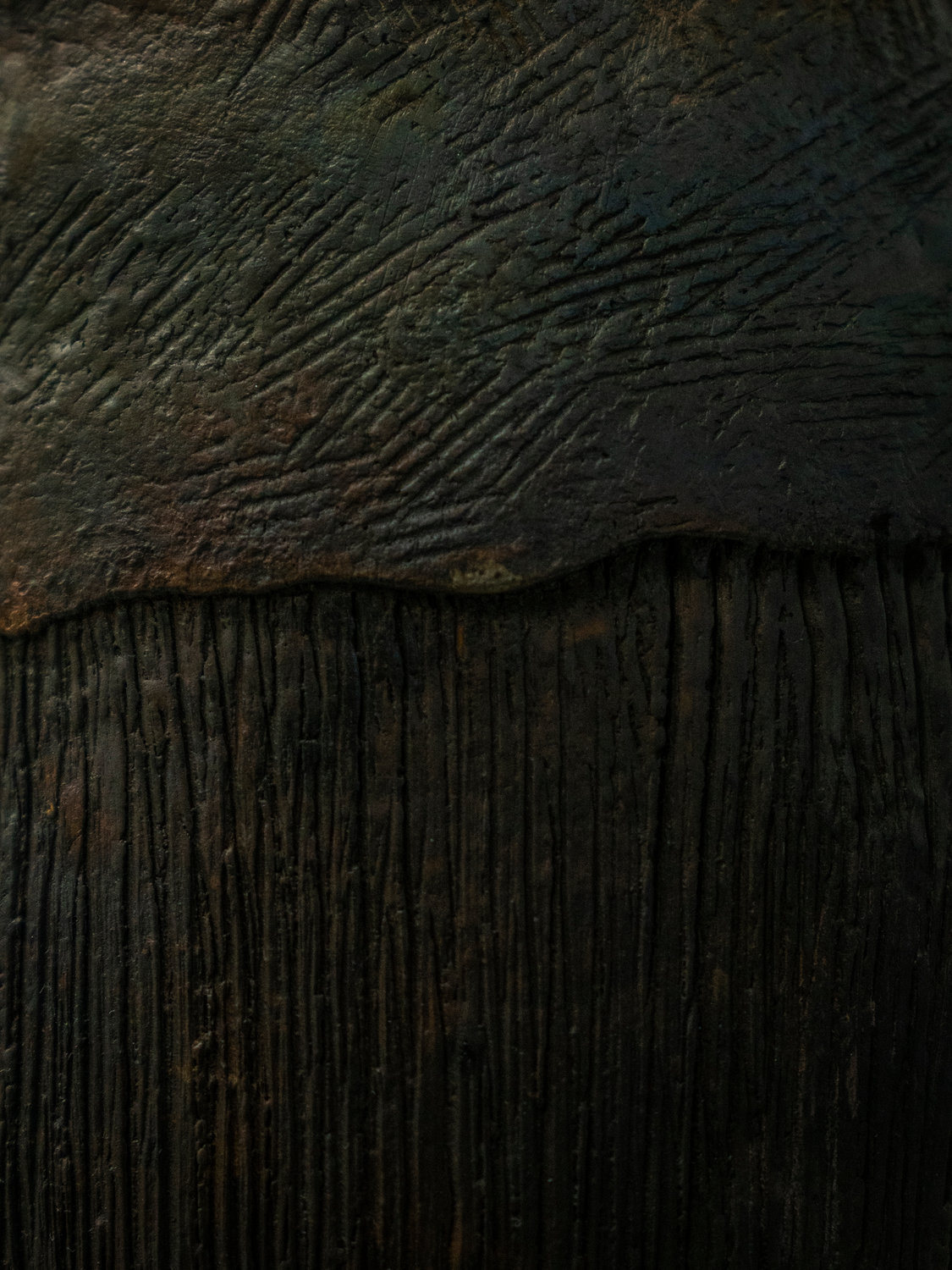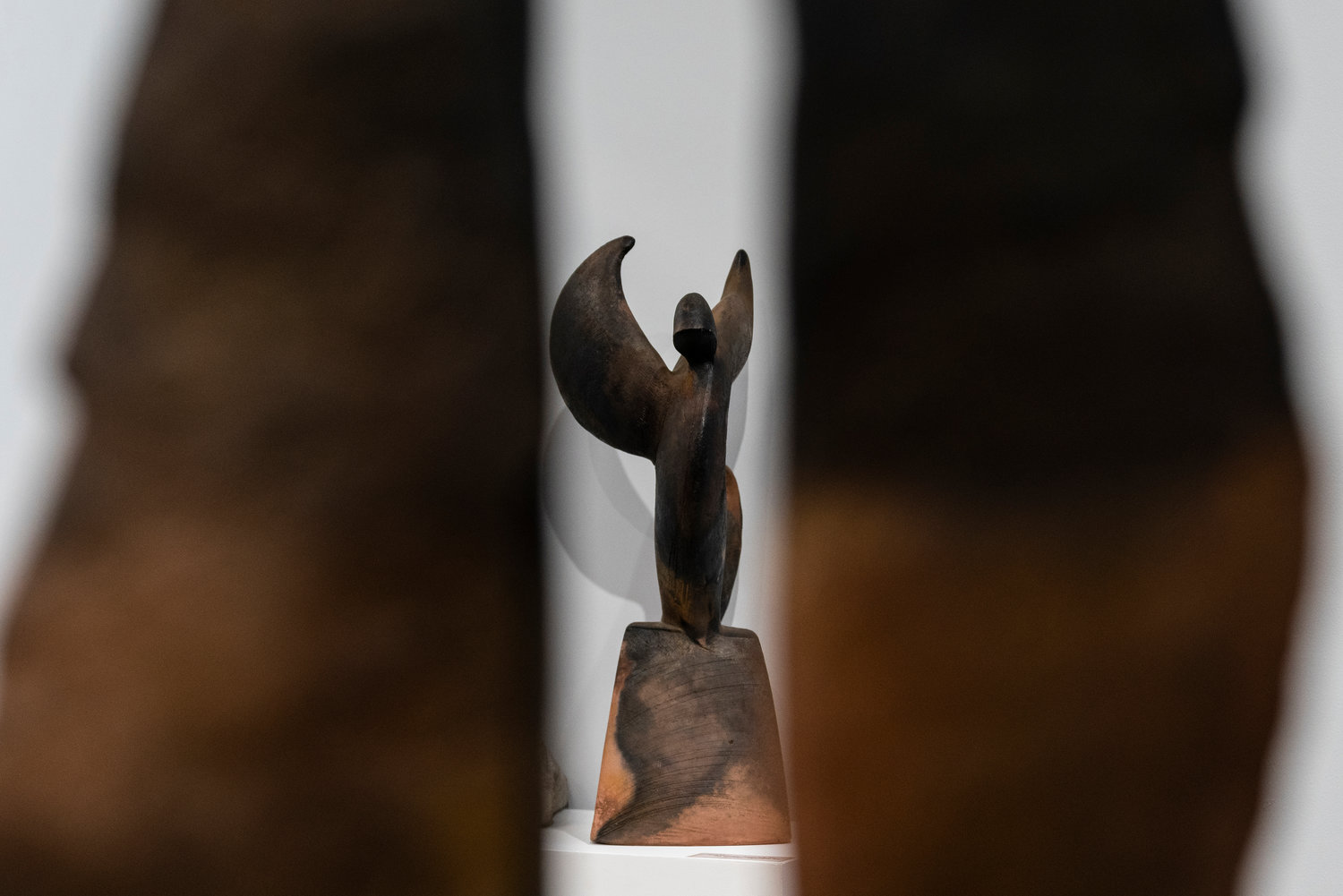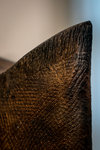Brother Ralph proves there’s angels among us
The beauty of art is in the eye of the beholder. Its symbolism and mystique can provide solace to anyone who studies it.
And on college campuses, the intellectual ethos that pervades the architect is best illustrated through ethereal pursuits like art.
Brother Ralph Bucci had similar ideas in mind when he set up his own art exhibit in the school’s library. Situated next to the main doors, the gallery features 18 ceramic sculptures which attract the gaze of students each time they enter or leave the Manhattan College Parkway building. The originality and obscurity of the display is an enigma at first glance — before it reveals something deeper.
Figuratively speaking, the gallery is a tapestry of spiritual and ancient themes, linking together the supernatural and natural worlds.
Bucci, the mind behind the masterpieces, has been a practicing artist since his time as a graduate student in the early 1980s. Now a career development recruitment coordinator at the school, Bucci has mainly built his collection out of clay and stone slabs. It was a craft first introduced to him as a young boy growing up in Cranston, Rhode Island.
“I’ve always enjoyed working in my grandfather’s vegetable garden, which then extended to home landscaping and yard plantings,” Bucci said. “Even at the Brothers’ community next door, we have a tremendous roof-top garden with a hundred potted flowering plants, tomatoes and eggplants.”
Bucci’s gallery is divided up into four different concepts — dolmens, scapes, closed and winged vessel forms, and messengers. Although each concept is physically and metaphorically different, they all capture the human imagination with equal weight.
Bucci’s approach to the molding process is all visual without any sketches or outlines. When engineering his sculptures extemporaneously, Bucci simply trusts his own intuition to deliver a profound message to his audience. And the same holds true for his current display.
The appearance of the dolmen offers a glimpse into prehistoric civilizations like, for instance, like ancient France — said to be the birthplace of these stone monuments featuring two upright posts and a lintel. The definitive purpose dolmens served is nothing more than conjecture, although many believe they were used for burial sites and for cult worship.
For the sake of his work, Bucci chose to modernize the look of his diminutive dolmens by giving them their own glow, either with spray paint or fire smoldering. He didn’t forget about the importance of the texture, either, which he welded and paddled with clay so the composite effect creates sort of an illusion for viewers.
“This is an abstraction because it takes something we relate to with our experiences and lets us look at it in a different perception,” Bucci says. “The posts of dolmens create negative space and create empty space. It invites you to go on, but then it repels you so can’t. So it’s a pull attraction, but also a repulsive force simultaneously.”
The closed and winged vessel forms visually influence the viewer’s perception as well. Among their notable parts is a conically shaped base made from coils, which contributes to the asymmetric complexion at the vessel, manipulating the viewer’s interpretation of shape.
The process for this theme includes scoring the edges of the clay to attach the different sides.
“All the work has some sort of tension in them, and it may not be obvious initially,” Bucci said. “One of the tensions of the closed vessel is you can’t look into it and put anything in it. The other tension is that nothing is symmetrical.”
The shape of the vessels are like fins, Bucci said, making them analogous to certain water animals such as dolphins or whales. This crossover with aquatic life is yet again symptomatic of the spontaneity and ambiguity of Bucci’s work — and that’s what makes it fun for him.
“The apparent wings have some aquatic references that simulate water life,” Bucci said. “We can relate to these forms, shapes and textures because of our own collective unconsciousness.”
The scapes are representative of topographic features — which, too, fall under the purview of the human experience. Their triangular, geometrical build makes them seem like abstracts of mountainscapes and hillscapes.
“It hints at a hill in the distance or mountains in the distance, but they are, of course, abstracted,” Bucci said. “For the scapes, I make two shapes and score the edges that meet together, which is the base. And I also leave the weld mark because it leaves a texture that is interesting.”
Each sculpture would lack its unique aesthetic if not for the firing process — and it can’t start until the clay slabs are dry and placed into an electric kiln. Then the magic happens as the heat burns off the paint’s medium as an ember, causing the color oxides to combine with the clay’s surface. It’s similar to the burning of a cigarette. Depending on the type of sawdust Bucci uses, it could take as long as three or four days to be properly smoldered.
“The coloring oxides interface with the surface,” he said. “Sometimes it burns off. Sometimes it gets really black. And sometimes it’s red or yellow. I know what the color spectrum is, but you never know what’s going to happen, which leads to spontaneity.”
Through the interaction of various elements like color, texture and shape, the finished products give viewers something they’ve never seen before. The spirit of innovation palpable in Bucci’s work could be especially inspiring to college students, he added, who are trying to become more well-rounded and sophisticated during these years.
“I hope students can appreciate shape, form and texture because they are running into it all the time in daily life,” Bucci said. “It’s about seeing something that didn’t exist before. Creation allows different things to happen, and art is an expression of our human spirit.
“College is about exposing ourselves to new experiences and subject areas and thoughts that we may not have had before. The university experience is about broadening our perception, and not to close it down.”

